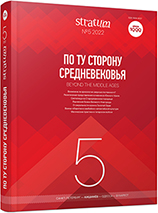Гермовидные средневековые изваяния Среднего Подонцовья: вопросы интерпретации и хронологии
Herma-shaped Medieval Sculptures in the Basin of the Middle Reaches of the Siversky Donets: Issues of Interpretation and Chronology
Author(s): Alina A. KharlamovaSubject(s): History, Archaeology, Ethnohistory, Social history, 13th to 14th Centuries
Published by: Издательский дом Stratum, Университет «Высшая антропологическая школа»
Keywords: Eastern European steppes; Siversky Donets; Cumans; medieval nomads; herma-shaped sculptures; stone statues;
Summary/Abstract: The paper considers a group of medieval statues with traces of processing along the entire length, but without hands and feet, which makes them similar to ancient herma. Hairstyles, headdresses and pectoral decorations depicted on them are similar to the costume details depicted on full-figure statues that are associated with the Cumans. At the same time, some elements of the costume cannot be understood without knowing how these elements were depicted on full-figure statues.Medieval sculptures played an important role in the funerary and post-burial rites of the nomads, and thought to be “substitutes” of the deceased. Probably, during the rituals, the clothes of the deceased were put on hermetic statues, and the sleeves replaced the missing image of the hands. Unusual is the absence or a schematic representation of the vessel on the herma-shaped sculptures, since the vessel is interpreted as the “receptacle of the soul” of the deceased ancestor. Apparently, this is due to changes in the religious worldview of the nomads as a result of socio-political upheavals in society.All of this points to the late dating of the herma-shaped sculptures. They probably appeared in the second half of the 13th century along with the influx of a new population and continued to exist until the beginning of the 14th century, when Islam replaced pagan rites among the nomads of the Eastern European steppes.
Journal: Stratum plus. Археология и культурная антропология
- Issue Year: 2022
- Issue No: 5
- Page Range: 233-244
- Page Count: 12
- Language: Russian
- Content File-PDF

